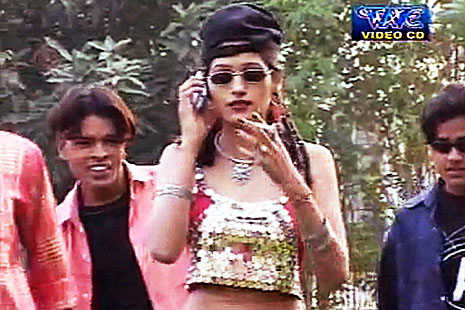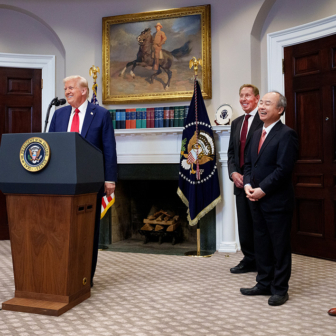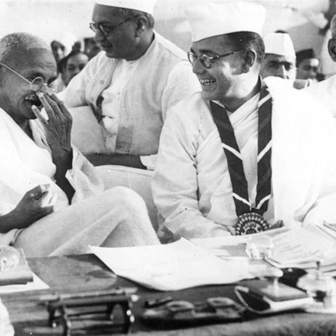“IT IS the girls who have gone astray,” a village elder told a journalist after the rape of a girl near New Delhi in early 2012. “The girls... are so scantily clad that it’s shameful... Mobile phones have given a lot of freedom to these girls and that’s why they are behaving in a wild manner.” It is a common theme. The autonomy provided by the phone leads young people, especially girls, to elude the authority of those who would have controlled and disciplined them in the past. In this, as in many other ways, the mobile phone symbolises the disruption of Indian life by much wider economic, cultural and technological forces.
Before the mobile phone, landlines existed in India, but they were the preserve of the privileged (and even they had to wait years for a connection). The mobile phone, by contrast, is said to have reached a stunning 900 million subscribers since its full-blooded arrival in India just over a decade ago. Cheap mobile phones mean that Indians of every status are able to speak with each other as never before.
For governments and great corporations, and for entrepreneurs who would like to be great, the mobile phone represented an immense challenge and opportunity. Between 1993, when the technology began to be deployed in India, and 2012 the country had ten communication ministers. One of them was convicted of corruption and sent to prison; a second was also charged with corruption; a third faced probes that would take years to unravel; a fourth was murdered (though in circumstances not directly related to telecommunications); a fifth was undermined, overruled and rancorously removed. For governments, bureaucrats, regulators and politicians, telecommunications offered a bed of thorny roses, and it is these contests over decision-making and power that we try to understand in the first part of our book – the Controllers.
The mobile phone expanded faster than the automobile. It was cheaper, of course, but many more people were involved in the chain that connected manufacturers to customers. There was nothing natural about wanting to have a mobile phone: the technology was alien and calls were expensive. The process to build infrastructure and create demand involved trial, error and millions of dollars invested in what was still an unknown future. As the technology spread in the first decade of the twenty-first century, a vast enterprise bubbled up alongside it, with a cascade of occupations and jobs.
These were the Connectors, people ranging from the fast-living advertising women and men of Mumbai to small shopkeepers persuaded by their suppliers to stock recharge coupons for prepaid mobile services. In between were the technicians who installed transmission equipment; the office workers who found sites and prepared the contracts to install transmission towers (400,000 in 2010); the construction workers and technicians who built and maintained the towers; and the shop owners, repairers and secondhand dealers whose premises varied from slick shopfronts to roadside stalls only slightly more elaborate than those of the repair-walas who once fixed bicycles on the pavement. The Connectors ensured even those with limited purchasing power participated in India’s booming economy.
Once the mobile phone reached “the masses,” the masses became the third group in the chain, the Consumers. Mobile phones were used for business and politics, in households and families and to commit crime and organise terror. But the phone was only a tool. Its effects depended on the knowledge and resources of the people using it, and “middle men” usually started with advantages that “lesser” men and women did not share. In politics, the mobile phone was a device that allowed organisations that were already bound together by convictions to exert influence in a manner that hitherto was impossible. Fancy technologies alone don’t win elections, but cheap, easy-to-use technology gives people with common interests a powerful new weapon with the potential to mobilise and disrupt existing political and social structure.
AS THE technology entered people’s lives, they had to deal with its varied effects: on household economies, parenting practices, intimate relationships, youth culture and much else. Values and meanings – how people regarded “public” and “private,” or the proper roles of men and women in controlling technology – were reshaped in the process. In India, the cheap mobile phone enabled young couples to talk to each other unknown to disapproving elders or for daughters-in-law to talk to fathers-in-law as they had been unable to do in the past. Transactions like these occurred in tens of millions of families almost daily from the early years of the twenty-first century. As they accumulated, like grains of sand on a windswept beach, the dunes of social practice began to shift.
Beyond India’s cities, and among conservative people in the cities themselves, the mobile phone became a metaphor for changing values and practices related to domesticity, sexuality and morality. In a time of rapid change and disarray, certainties were challenged by ballooning consumerism, relentless migration and unprecedented access to information. The mobile phone embodied the ills of an anxious modernity.
In the cities, it became common to see middle-class women, dressed in Western-style business suits or jeans, using their mobile phones wherever they went. Advertising campaigns were quick to tap into these changes, using images of alluring women to promote mobile phones; makers of music videos incorporated the apparent liberation bestowed by the mobile phone into songs and dances.
For new, “liberated” women, the phone was portrayed as a perfect vehicle for gossip (gupshup), romance or the promotion of exciting social relations. Many songs and videos featured women – popularly known as mobile walis – speaking on their mobile phones to their lovers. Though available in CD/VCD shops and later on YouTube, they were most popular on mobile phones.
Music clips featured seductively clad women using mobile phones, dancing in come-hither style and singing lyrics peppered with double meanings. Well before it entered the mainstream music market popular Bhojpuri music had been characterised by “clever phrasing, double entendres, subtle innuendos and suggestive imagery that enabled it to convey taboo sexual acts and desires.” For at least one critic, though, the “raunchy flavour” of Bhojpuri music in VCD/DVD formats and on mobile phones was indistinguishable from soft pornography. Yet the music also retained its capacity to satirise the “modern condition” and laugh at the antics of both women and men as they coped with new times and customs.
One video clip begins with Tiwari, well-known the singer, daydreaming of a woman he met in a bar. It cuts to a scene where a glamorous young woman in a halter-neck top, tight jeans and loose hair dances seductively while drinking alcohol and talking on her mobile phone. This mobile wali is depicted as a daring, sexy tease: a woman who defies the norms that usually bind Indian women. She dances, smiles, drinks, smokes and wears skimpy clothes – all with a mobile phone in her hand. This is her style, as the chorus says:
Mobile in [her] hand, she has a smile on her lips.
She radiates style whenever she moves sideways, forwards, up or down.
Everyone, including neighbours are dying [from excitement]
[Because] the babe, having drunk beer... Oh baby, having drunk beer…
The baby (babe) dances chhamak-chhamak-chham.
The following scenes revolve around the woman who makes men drool as she struts around with a mobile glued to her ear. She is both objectified as a femme fatale and empowered as someone who can choose from those around her or from others at the end of her phone. The song continues:
Forever ready to explode with anger [and] swear words on your lips,
You move the way life moves out of one’s body [when one dies].
The cap worn back to front, dark sunglasses, the cigarette is Gold Flake [a famous Indian brand],
I’m working at trying [to seduce you], there is still some time to go
before we get married.
The young woman remains remarkably composed, comfortably entering male-only arenas and adopting male-dominated practices, such as drinking alcohol in a bar and smoking in public spaces, all this while talking on her mobile phone. Only among urban sophisticates could such conduct be imagined. The singer and his rustic male companions go to pieces under her spell. The main male character warns his friends: “She shoots Cupid’s arrows with her eyes.” True to the Bhojpuri genre of satire, the clip ridicules the lewd, drunken men at the same time as it reminds viewers of the challenges that new attitudes and technologies present to old values.
The clip vividly illustrates the confrontations with tradition that cheap mobile phones provoked. The panicking priest reminds viewers of the precariousness of religious structures and the frailty of people in authority. In the final scene, the priest succumbs to temptation and joins the men in a dance around the woman, who still holds her magic wand – her mobile phone. Portrayed as a loose, urban woman, the mobile wali breaks long-established rules of conduct, partly empowered by her mobile phone. It could lead a village elder to apoplexy.
Another video clip, Mobile Wali Dhobinaya, betrays a larger anxiety: that of the “village” divested of its men, who have increasingly moved to the cities in search of work. The sari-clad wife roams alone in the fields, with only a cell phone to communicate with her absent husband. The theme recurs in many video clips where the bemused Bihari migrant labourer arrives in the city. He finds a forbidding place, filled with voluptuous mobile walis, riding on scooters and confidently chatting on their mobile phones in public. This time, however, it is the Bihari bhaiya (village guy), a shadow of his former male self, who is depicted as helpless and confused at the sight of these city women with phones clapped to their ears.
We found more than a dozen popular songs at this time that highlighted how young men and women could connect through the mobile phone. The mobile wali was anything but the demure maiden presented to a select group of future in-laws prior to an arranged marriage. Rather, she was flirtatious, uninhibited and confident, challenging established social conduct and “traditional” values. None of this, of course, was “pornographic” or contrary to the law. Yet for guardians of old values, the unconstrained freedom enjoyed by the mobile wali led morality towards dark, wayward ways.
The mobile wali–style clips are relatively innocent. But some Indian manufacturers of handsets, eager to eat into Nokia’s dominance, have used racier material to advertise their phones. The Lava brand marketed its Lava 10 phone in 2010 with a television commercial in which a supermarket cashier gives customers their change in the form of teabags, a common solution to a shortage of small coins. Then a handsome young man, and his even more handsome Lava 10 mobile and its “sharp gun-metal edges,” come to the checkout. The winsome cashier abandons teabags as change and gives him a packet of condoms. Lava, the tag-line declared, “separates the men from the boys.” In 2012, Chaze Mobile, manufacturers of ultra-cheap cell phones, hired Sunny Leone, a Canadian citizen of Indian origin and a leading actor in pornographic videos, as their “brand ambassador” for a new range of multi-featured yet very cheap phones. Gambling on Leone’s notoriety, the company aimed “to position its product in an extremely cluttered low-end handsets market.”
IN INDIA, the mobile phone was not the old landline that had slipped into daily life in Western countries as unnoticed, in the words of sociologist Claude S. Fischer, as “food canning, refrigeration and sewage treatment” and become “mundane.” The mobile phone, as Clay Shirky argues in Here Comes Everybody: How Change Happens when People Come Together, now means that “the old habit of treating communications tools like the phone differently from broadcast tools like television no longer makes sense.” The potential to record and to broadcast, at one time limited to those who controlled presses and transmitters, was now available to the majority of people, even the poor.
Alongside music and screen savers featuring gods, WWF wrestlers and Bollywood stars, mobile phones have also brought cheap, full-colour, small-screen pornography to the masses. Pornography could be made available everywhere—from kaccha houses to penthouses. But though police and morality crusaders aimed mostly at the poor, the powerful too were vulnerable to the seductive properties of the cell phone. In an incident in the Karnataka state legislature that came to be dubbed as “Porngate,” two MPs were caught viewing what were said to be pornographic clips on a mobile phone while a debate was going on. The legislators belonged to the Hindu right-wing Bharatiya Janata Party, constant advocates of censorship in the name of preserving morality and Hindu values.
Mobile phones also facilitated crime and terrorism. Indeed, they created new crimes – harassment through text-messaging, for instance, and “faceless frauds” in which money disappeared without a victim ever seeing the criminal. And, as the Mumbai attacks in 2008 demonstrated, mobile phones enabled gullible young terrorists to be directed like human drones by remote “controllers.”
India experimented with a host of initiatives to establish mobile phone laws and cyber-security frameworks; but provisions were scattered through legislation, guidelines and rules. In 2012, proposals were made to establish a “telecommunications security testing laboratory” to certify that all telecom equipment conformed to government regulations and did not harbour illegal tapping or disruptive devices. Such an organisation, however, was many months or years away from functioning. State police forces established modest mobile cyber-crime labs that attended crime scenes and collected evidence effectively.
Indian governments, however, faced a problem that wealthy states such as those in Japan, western Europe and North America had not solved: how to mitigate the evils that mobile phones could generate while preserving their capacity to improve even a poor citizen’s ability to take advantage of the rights of democratic citizenship.
But mobile phones can both empower and disempower, and it can be a distraction to focus on questions of good or bad. The technology exists; immensely powerful economic forces, augmented by widespread social acceptance, have disseminated it widely; and it will only go away if a major cataclysm befalls humanity. We live with mobile telephony, and most of us relish the benefits. India in this sense is no different from other places. But its disabling inequalities and its diversity mean that the disruptive potential of the mobile phone is more profound than elsewhere and the possibilities for change more fundamental. •




